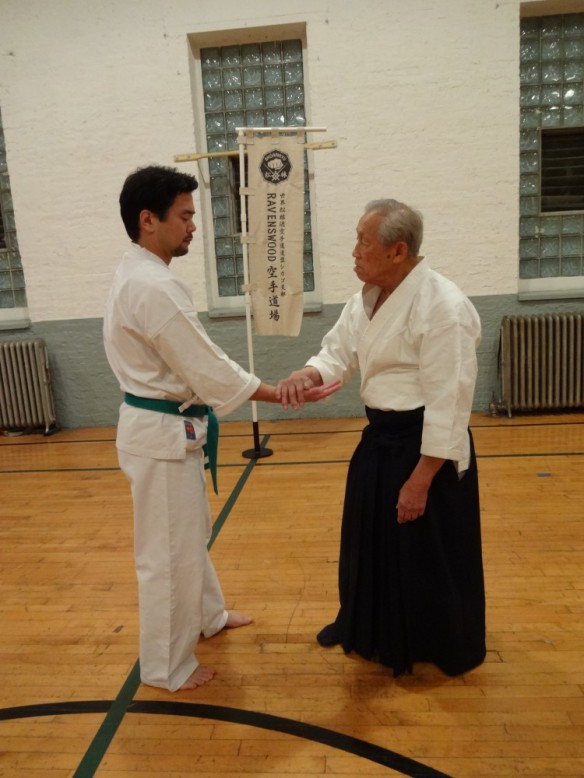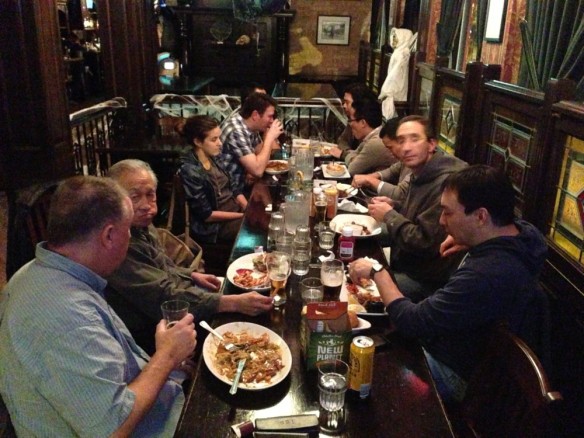Looking forward to driving Arab cars
No, this is not an Arab car. It's the Toyopet. But read on.
I am really looking forward to the day that I can drive an Arab car. Or maybe a Muslim car, if there is such a thing.
Not literally, I mean, I don't really know anything about the state of the auto industry in the Middle East. I'm completely ignorant to that aspect of their local economies.
What I mean is, in light of the Paris attacks last week; the return of 9/11-level anti-Arab/anti-Muslim/anti-anything-that-resembles-an-Arab-Muslim rhetoric spewing from the vacuum-brained and toxic-mouthed pit of Fox News and the current crop of Republican presidential hopefuls, plus the attempts to outdo each other in Ebenezer Scrooge-levels of non-sympathy regarding Syrian refugees being paraded across Facebook from conservative-leaning friends and relations (God bless you all, insofar as you are still members of the human race . . . genetically anyway), I've now decided that the best way to stave off the indignant rage-induced headache creeping up my spine is to look towards the future.
And that is a future in which we are driving Arab cars.
Think of it this way. Back during that little skirmish known variously as World War II or the Pacific War or the Second Sino-Japan War, the then-Empire of Japan was engaged in what truly was an existential conflict with the West and its Asian neighbors between 1937 and 1945. According to Professor Rudolph Rummel, the civilian death toll alone was 5,424,000.
In the United States, it'd be safe to safe that a pretty sizeable dollop of the national stockpile of hatred was reserved for Japan, especially after the December 7, 1941 surprise attack on Pearl Harbor. Admiral William "Bull" Halsey, the legendary American naval commander, certainly didn't mince his words. “Kill Japs, Kill Japs, Kill More Japs!” he told his troops. “The more of the little yellow bastards you kill, the quicker we go home!” And he certainly wasn't one for half-measures, no siree. “Before we’re through with ‘em, the Japanese language will be spoken only in hell.” he extolled. He, and a lot of his fellow Americans, were not interested in mere military or political defeat. He was talking extermination.
And that hatred was so virulent, so extreme and so blinding, the U.S. government ordered the rounding up and imprisonment of over 127,000 Japanese American men, women and children because of their unfortunate geographical and ethnic connection to the nation's enemy. An "internment" they called it; a "relocation," in which homes, businesses, fortunes, lives these people had built up over decades were shattered, along with any semblance that the flag, the constitution or any of the promised freedoms in this country mattered.
(And by the way, as of writing, the news is circulating about that the Mayor of Roanoke, Virginia, David A. Bowers, in an act of mind-boggling galactic stupidity, has invoked the internment as grounds for rejecting the taking in of Syrian refugees).
But I digress; back to cars! Anyway, after the war ended, an ending in which the Allies were victorious and Japan was in ruins, followed years of U.S. military occupation, reconstruction, the 1964 Tokyo Olympics, the Showa era Godzilla films, and Mach Go Go Go on TV (that's Speed Racer for the rest of you), and then something happened: The Japanese car!
Seemingly out of the blue (though not for anyone paying attention), Japan's automakers (You know the names - Toyota, Honda, Nissan, etc.) broke onto the scene and by the 1980s overtook the U.S. as the world's leading car producer.
And not just that, suddenly, Japanese stuff was cool and hip and trendy. Back in the 1940s, U.S. propaganda films mocked Japan's traditional rice-based diet; the idea of eating raw fish was considered barbaric. Sure, some things were acceptably exotic, like purchasing paper parasols or picking up Japanese bar maids if you were a soldier during the occupation (just don't bring her back home to mother).
Now, sushi restaurants were springing up left and right, American businessmen were reading copies of the classical samurai strategy guide The Book of Five Rings to gain insight into their overseas competitors, little kids were taking karate and judo at the YMCA (uniforms to be repurposed into Luke Skywaker costumes at Halloween), and the television event of 1980 was NBC's mini-series adaptation of James Clavell's novel Shogun.
And it has never stopped. Japanese stuff was (is) here to stay. Anime, sudoku, Pokemon, tamagochi, Mighty Morphin Power Rangers, Naruto, Ruronin Kenshin, Nintendo, Sony XBOX, ramen . . . the list goes on and on.
So what's my point? With all the loud-mouthed bile being shouted about Arabs and Muslims, with all the naked hate being propagated about the internet accusing every non-Jewish Semitic person of being a wide-eyed, suicide-bombing terrorist mongrel, I dream of a future where all of that is behind us. Where it is more than forgotten, it's been pushed aside by something different; a positive and possibly hipster embrace of all things Arab and Middle Eastern.
I'm imagining a reality with Arab restaurants of every size and shape dotting both metropolitan landscapes and far-off suburbs. A world where white college guys are studying up on Arabic in a desperate attempt to ask the cool Iraqi girl in class on a date. I see food trucks dispensing grilled halloumi, and dance clubs cranking out a fusion of hiphop and Berber or Moroccan melodies.
Sure, things won't be perfect. But wouldn't it be great if the only notes of overt hatred were past-tense reminisces of that old Arab/Muslim-hating relative?; "Yeah, my granddad use to say 'raghead' all the time, and now I drive an Arab car."
What if the only problems being faced were whether the right actor was being cast as that popular Arab or Muslim comic book superhero or whether that new Arab-themed Broadway musical was culturally authentic enough? That would be a giant Neil Armstrong-sized footstep in the right direction, if you ask me. Certainly a better direction than the antagonistic indifference and ignorance we see being bandied about online and on the airwaves.
And yeah, this is a reality I really, really, really want to happen. One because I can't stand what I'm seeing and hearing in the media, but also because of some personal encounters with the legacy of hatred.
Now, I've never been a refugee myself, nor had first-hand encounters with the terrors of war (thank God). But, as I'm half-Japanese and half-Korean, I've had a handful of unfortunate run-ins.
One that I remember is my first trip to South Korea. On Christmas Eve, my grandmother took me to the Methodist church in Seoul that my great-grandfather had founded as its minister. The current junior minister was introduced to me by my grandmother (he spoke English) and we had the following exchange.
Minister: "So, I understand you don't speak Korean."
Me: "No, I don't."
Minister: "But you do speak Japanese?"
Me: "Yes."
Minister: "And you are studying in Japan?"
Me: "Yes." (I was an exchange student to Waseda University at the time)
And at that point, the minister looked at me very seriously and sternly and said:
"I think the Japanese are the worst people in the world."
I had no reaction. And he continued.
Minister: "You see that girl over there."
I looked and nodded.
Minister: "That is my daughter. I tell her every day that the Japanese are the worst people in the world."
And with that he ended. Merry Christmas.
So, after that long-winded explanation, that's why I want to say, I dream of a day when we can be driving Arab cars.


.jpg)








